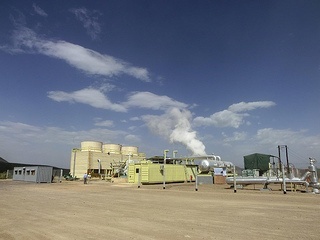While the focus on geothermal power in East Africa has mainly been on electricity generation, experts in Kenya now say that its potential goes beyond this into agriculture, health, tourism and hotel industries
Marietta Mutonga, a geoscientist resource and development officer at Kenya’s Geothermal Development Company (GDC) said, “Steam from geothermal power stations has potential use in agriculture, tourism and in the health sectors. Very little of this potential is currently in use in the country although it has fully been exploited in Europe and other countries.”
This comes at a time when the GDC - the government body responsible for geothermal power - is wooing investors to develop this huge potential.
With an estimated geothermal power potential of between 7,000 MW and 10,000 MW, Kenya is yet to fully benefit from its renewable energy, as only 200 MW is currently being exploited.
The country is expected to generate 50 per cent of its power needs from geothermal energy by 2018.
GDC has identified 14 high temperature sites in the Great Rift Valley that have the potential to produce more than 15,000 MW of power if fully developed.
According to Mutonga, steam for power generation must have an optimal temperature of 250°C and above. Once this heat has been utilised to turn the turbines, the cooling temperatures can be harnessed for other uses.
“Between 90 and 100°C, the heat can be used in drying grain, wool, hides and skins and vegetables. Already, pyrethrum drying is taking place at Eburru in Naivasha using steam,” she said.
It is in horticulture, however, where the biggest potential of geothermal steam use in agriculture lies.
In the Oserian Flower Farm in Naivasha, the steam is currently being used to heat greenhouses. In particular, horticulturalists are using heat from steam to control dew point temperatures.
Increased temperature in greenhouses has also boosted horticultural production by 40 per cent in companies using steam, according to GDC.
With the many flower companies located near Naivasha, where Olkaria’s geothermal stations are based, the potential for growth in the use of steam in horticulture is immense, according to officials.
Another use of steam heating is in aquaculture, with the practice of warm water fish farming.
While this practice has not been tried in Kenya, officials note that in Iceland and Tunisia, steam from geothermal plants has been used to warm water to 30°C for fish farming.
Research has shown that fresh water fish such as tilapia - common in the tropics - required temperatures of 25-30°C for better performance.
Pasteurisation of milk and fish preservation in cold rooms has also been cited as a potential use of steam from geothermal plants.
GDC officials however acknowledge that the major challenge of using steam in agriculture and other sectors is the expensive pumping and lagging systems.
The development of the Menengai Geothermal project, expected to produce 5,000 MW of electricity by 2030, will spur the growth of hotel and flower industries in Nakuru County.
The World Bank has also pledged to inject US$118mn towards the project, underpinning the value the Bank puts on green energy.
Mwangi Mumero





